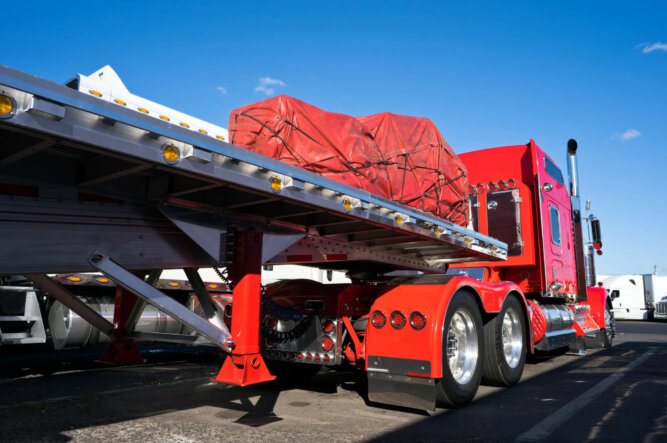Reducing the Risk of Cargo Theft

Double Down
against Fraud
Hire carriers confidently with RMIS and Carrier Assure
Cargo theft has been around for centuries, from robbers attacking merchants on trading roads to pirates seizing ships at sea to bandits on horseback robbing stagecoaches.
The last stagecoach robbery in the Old West happened on Dec. 5, 1916. The driver of a small, two-horse mail wagon was ambushed as he was riding to the town of Jarbidge, Nevada. The driver was killed and $4,000 was stolen; however, three suspects were arrested shortly there after. The stolen $4,000 was never recovered and is said to be buried somewhere in Jarbidge Canyon.
Unfortunately, crimes of this nature have evolved along with cargo transportation methods. Trucks and trailers have replaced horse-drawn carriages, and today’s bandits are organized into international crime syndicates. They are a technologically intelligent and sophisticated type of bandit.

Cargo theft has grown to become the costliest crime in America.
The average value of loss per cargo theft incident has jumped to over $300,000. We are talking about a high-reward crime, occurring nearly three times a day in America, and creating financial losses across our nation amounting to a whopping $35 billion annually.
Drivers will park their trucks at the truck stop and go inside to clean up or get something to eat, and when they come out, their trailers and tractors are gone. A career criminal who has the skill to hot-wire a truck and drive off in 30 seconds just stole it. Most cargo thefts occur without any physical violence toward individuals, so criminal penalties tend to be light.
Understanding the way cargo thieves plan and accomplish their attacks can help brokers and shippers protect themselves against cargo crimes.

Here are some common strategies criminals use to attack truck shipments.
- Cargo thieves target goods they can easily broker through a “fence.” They set up surveillance positions outside of a manufacturing/distribution facility to monitor shipping operations and gather information. Depending on which modus operandi (M.O.) the thieves use, they will then wait for the perfect opportunity to strike. If the M.O. is to steal the truck, the thieves may have already secured a warehouse to temporarily store the freight, as well as taken possession of a stolen truck to attach to the stolen trailer. They may even have acquired another trailer to offload the cargo.
- Another approach is to wait until the driver has left the truck and trailer unattended. Thieves are knowledgeable and trained in gaining access to a truck and manipulating its ignition system. They then drive off with the stolen equipment.
- If a trailer is not connected to a truck, the thieves hook up their recently acquired stolen tractor to the loaded trailer and move it to a secure location. Or they may break into the trailer and offload the cargo into an empty trailer, further hindering the ability of law enforcement to locate and recover the stolen goods.
- More sophisticated criminals may steal the truck and/or trailer and dump it on the side of the road or in an industrial area. They can then observe from a safe distance to test whether a tracking system is embedded in the truck and/or trailer, and to see if law enforcement is monitoring the stolen equipment. If they believe nobody has followed the truck and/or trailer, the thieves will then move it to a secured warehouse location and begin breaking the product down for resale on the black market. Preparing stolen goods for resale may entail changing the packaging, re-labeling the boxes, and even creating falsified bills of lading or customs paperwork to facilitate moving the stolen cargo out of the country.
What can you do to prevent cargo theft?

Companies can take a number of actions to improve facility and vehicle security, from implementing security devices and technologies to creating common-sense security practices.
Truck drivers don’t have to go with a tech tool to reduce the opportunity for criminals to commit theft. They can apply a variety of locks to secure the vehicle and cargo, such as king pin locks that prevent the tractor and trailer from being separated, air brake valve locks that prevent brake release, and glad-hand locks that lock the trailer’s air line. Seals also limit intrusion and create an alert that doors have been tampered with.
Be alert for signs that your facility is under surveillance. Since criminals can move stolen goods quickly, all suspicious activity should be reported to law enforcement officials immediately.
The consequences of a stolen load are far greater for a broker, shipper, carrier, and manufacturer than most other types of fraud in our industry. The financial consequences are generally nothing short of devastating and can result in total business failure.
Contact Truckstop at 1-888-364-1189 to learn more about the variety of products we have available to help you protect your business.
Get helpful content delivered to your inbox.
Sign up today.
Find high-quality loads fast, get higher rates on every haul, and access tools that make your job easier at every turn.






